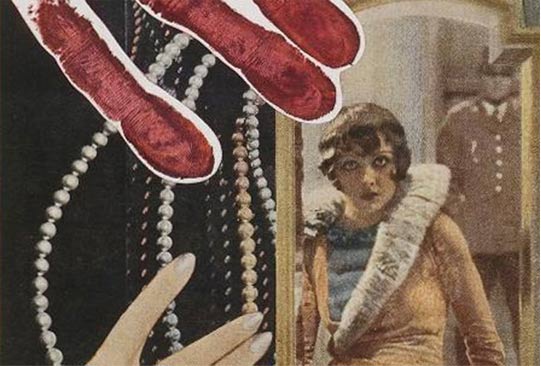THE SPREAD OF SURREALISM
Surrealism has long been thought of as a mainly French phenomenon, and the tremendous surrealist output in central Europe has been largely overlooked — particularly in photography. Artists in Czechoslovakia and Poland furthered surrealist ideas extensively, even in provincial towns such as Olomouc or Lviv, home to the groups f5 (Czech, 1933 – 1938) and Artes (Polish, 1929 – 1936), respectively. These artists pursued pseudo-documentary themes, staged impromptu performances for the camera, and made subversive, hallucinatory self-portraits. Surrealism, with its exploration of private fantasy, offered a means to turn one’s back on the public, instructional mission of so much art and culture in the region. At the same time, in 1930s Czechoslovakia, surrealist photography received remarkable visibility. In photomontage book covers for the Czech edition of a French thriller series called Fantômas, for example, Jindřich Štyrský portrayed a toxic (and classically surreal) confrontation of seductive beauty and unexpected violence.

Jindřich Štyrský, cover for Marcel Allain and Pierre Souvestre, Fantômas (The Dead Man Who Kills), 1929 (detail) - view full image
- The Cut-and-Paste World: Recovering from War
- Laboratories and Classrooms
- New Women — New Men
- Modern Living
- The Spread of Surrealism
- Activist Documents
- Land Without a Name
- The Cut-and-Paste World: War Returns

